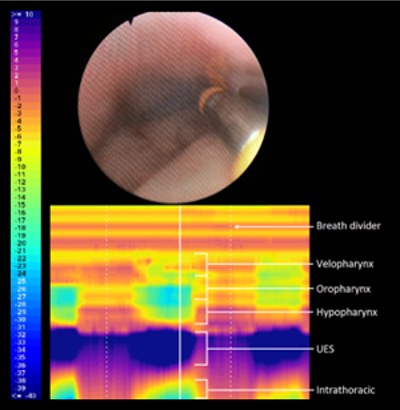Addressed Need
OSA is a common sleep disorder associated with daytime fatigue and cardiovascular disease. As many as half of OSA patients reject first-line treatments that use positive airway pressure, necessitating surgical intervention instead. Drug-induced sleep endoscopy (DISE), the current standard for selecting OSA surgical procedures, is expensive, subjective, and requires sedation that only approximates natural sleep. Meanwhile, HRM is an inexpensive procedure used commonly to assess other disorders of the upper airway, but the labor cost of manually interpreting the large amount of data it produces has kept it from being useful for OSA surgery planning until now.
Technology Description
This technology leverages artificial intelligence to phenotype the pharynx with HRM data. Results from phenotyping using HRM were compared to standard DISE scoring to create a machine learning (ML) model. This model can then be used on new HRM data to accurately predict the classification determined by the expert DISE reviewer.
Competitive Advantages
Because it uses software to interpret manometry data, this technology offers procedural cost savings over the current standard of DISE, which requires general anesthesia and interpretation by highly trained specialists. While DISE analysis is subjective and therefore prone to inter-operator variability, well-trained software can objectively and reproducibly identify features of airway collapse. Furthermore, without the need for anesthesia, HRM phenotyping can be performed during natural sleep, providing more accurate and relevant information.

Figure: A screenshot of the browser-based software developed by Vanderbilt researchers, which displays both high-resolution endoscopy video (top) and manometry pressure data (below). This software allowed the surgeon to score features in the DISE video, associating them with synchronous HRM data that was then used to train and test the highly accurate ML model.
Stage of Development
Prototype software has been developed to train and test an ML algorithm on data from 40 patients, with a prediction accuracy of 97%. We are seeking commercial partners to further develop this technology and help transition it to the clinic.
Intellectual Property Status
Patent: WO2023/192607




